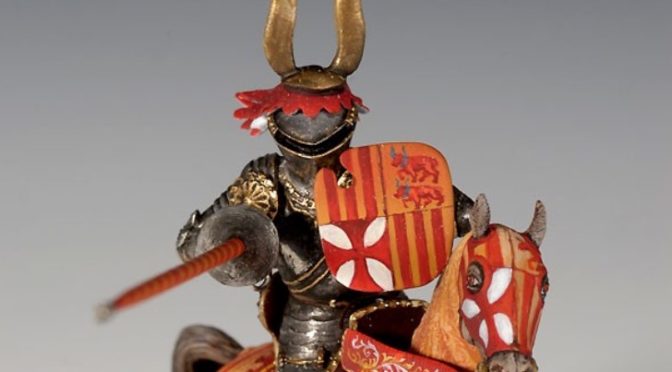The people who ruled Greater Occitan were totally different to those who lived there before 100BC. A number of invasions resulted in a relatively small number of the invaders taking control.
There were changes of a similar type in many other parts of Europe such as the Norman invasions of England, Sicily and Southern Italy, but probably more in Greater Occitan than anywhere else. Nor was it the same in every part of Occitan.
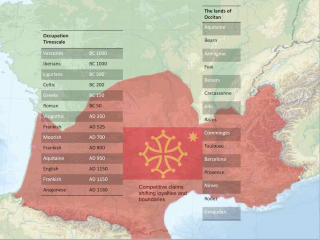
Both Provence and Catalonia were directly influenced by the Greeks, Ligurians and Aragonese.
Aquitaine was influenced by the Vascones/Aquitanii. The English (Normans/ Angevins/Ramnulfids/Plantagenets) ruled all Occitan exept Provence but then withdrew to Aquitaine.
The Moors ruled all of Aquitaine and Occitan but for a very brief period. However the Moors ruled the Mediterranean coast for nearly forty years.
Gallic influence was limited to the north (Limousan) and Provence.
Examination of the ancestral trees of the various rulers of Occitan shows lines from the Visigoths, the Moors, the Franks, the Romans the Byzantines and possibly the Jews of Babylon. There are few instances of this ruling class springing directly from the earlier inhabitants of the area.
Segments of the family tree of Gaston Phoebus , Comte de Foix makes this point very well.
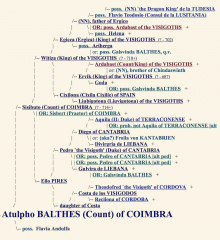 It is necessary to go a long way back and to a specific branch of the tree to find any Pre- Roman asncestors. However, this tree , drawn from Jamie Allan’s “Fabpedigree” website is one example where one branch of the tree leads to someone from earlier peoples. Because the Dragon King is from Lusitania, he would have been Celtic or Iberio- Celtic.
It is necessary to go a long way back and to a specific branch of the tree to find any Pre- Roman asncestors. However, this tree , drawn from Jamie Allan’s “Fabpedigree” website is one example where one branch of the tree leads to someone from earlier peoples. Because the Dragon King is from Lusitania, he would have been Celtic or Iberio- Celtic.
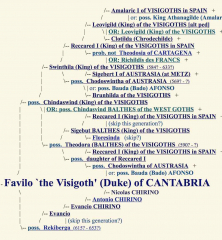
Even in Cantabria in the heart of the Basque country the lines run back to the Visigoths. The mysterious peoples who spoke a Pre-European languges , Vascones, Aquitanii, Basques and Iberians seemed to have made little contribution to the formation of the ruling class. howeve , once again this diagram does show that Favilo’s matriachal ancestors come from some unspecified line.
We know little of these earlier people and even the Celts, who are identified well in the Roman records, seem to have made little contribution to the area covered by Greater Occitan.
Who were the Romans?
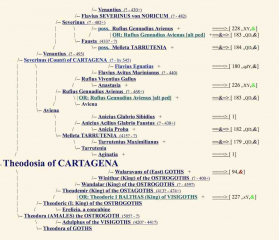
This chart, still part of the ancestral tree of Gaston de Foix is more typical. This and the family trees of other lords of Occitan, Aquitaine and Provence seems to suggest that the ruling class sprang largely from the Roman occupation and then accommodated the later rulers without any great disturbance.
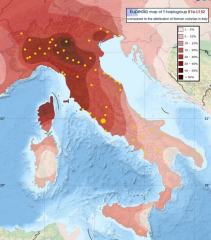
This is a comparison of the occurance of the S28 Haplafroup in Northern Italy with where the Romans established their cities. There is a strong correlation. There are suggestions that this means that the Romans were just another Celtic tribe. If this were to be true then in what is now northern France it would be impossible to distinguish between Romans and Celts. They could be the same Haplogroup!
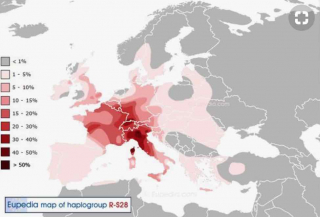 S28, is in fact the parent of the Atlantic Celt Gene considered to be typical of the Hallstat Celts. As discussed in “The peoples of Occitan” there is very little occurance of this gene in Southern Aquitaine and Occitan, below the Garronne River. if this is also the “Roman” gene then it would confirm that Roman occupation did not carry with it a multitude of Romans.
S28, is in fact the parent of the Atlantic Celt Gene considered to be typical of the Hallstat Celts. As discussed in “The peoples of Occitan” there is very little occurance of this gene in Southern Aquitaine and Occitan, below the Garronne River. if this is also the “Roman” gene then it would confirm that Roman occupation did not carry with it a multitude of Romans.
However it is also possible this was not the Roman Gene; that the Celts simply came to live in Roman cities. Perhaps the real implication is that even if genetics is a precise science, the historical interpretation of the findings is not.
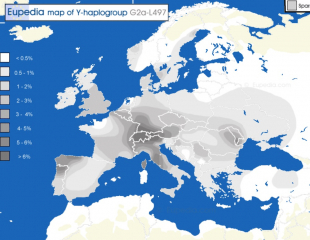 This is Haplogroup G2a which is considered by some to be the roman Gene. However note the strong correlation between romans and R-S28
This is Haplogroup G2a which is considered by some to be the roman Gene. However note the strong correlation between romans and R-S28
There is also some support for the belief that Romans are Haplo group G2a, but then in the same breath it is pointed out that this graph is not a good match with Roman centres of population. However for thee hundred years, Roman military effort was concentrated along the Rhine and Danbe rivers and on the walls (Limes) built between the two. for that scenario this is not a bad match.
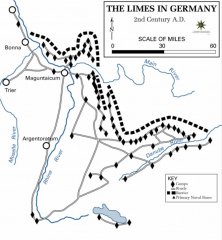
As can be seen the Limes run accross the northern border of Switzerland and it would not be unexpected for the support for the front line troops to be located some way behing the frontier. these trops and support facilities could well have left their genetic fingerprint on the area.
If so , the G2a distribution is also a good match for what would be expected from light handed roman management in Occitaine and Aquitaine. The higher concentration in the eastern part of Provence also matches what is known about Roman patterns of colonisation,
The ownership of land.
But how did ownership of land pass into the hands of the ruling class?
We know from a nuber of differing sources that Celtic land belonged to the tribe (clan).
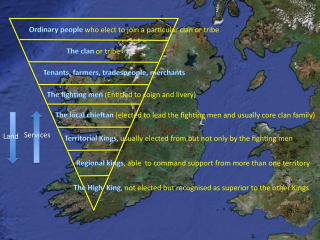
It was possible for ordinary people to elect to join a different clan if they were acceptable to that clan.
The clan decided how the land and the products of the land would be used and allocated responsibility to individuals to perform the work.
A separate group were the fighting men, though when under threat the whole clan could be mobilised.
The selection of the leaders of the fighting men was by election by the fighting men the leader would command.
Kings in the Celtic system came from a quite separate election system in which every member of the tribe had a vote. The kings were given the responsibility to promote the interests of the clan. They were the servants, not the masters of the clan.
The King then determined what was expected of the fighting men, both defence or attack. From 200 BC onwards the election of the King must have beome political as there is some evidence that in at least some tribes the position of King became hereditary.
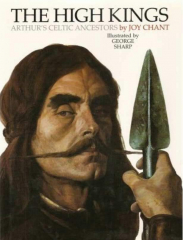
In the Celtic system there was also the question of the persona of the High King, who represent the Celtic nation in times of crisis. In each Cetic region the competition for the position of High King was intense, sometimes resulting in internal wars when the objective should have been was to deal with some external threat.
If this sounds a little like the Roman system; well it was. Substitute the senate for the people of the tribe, the consuls elected by the senate as the king, and the dictator as the High King and the two systems are almost identical even to the inherent insability in the upper levels.
The genealogists who believe that the Romans are in fact another Celtic tribe are tremendously encourage by this comparison.
This also goes some way to explain how Julius Caesar took over Gaul in such a short period. He understood the Celtic System and made himself High King.
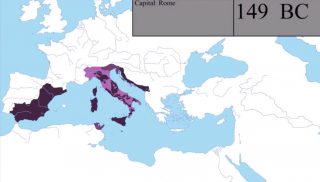
In 218 BC, the Roman occupation of Iberia began as a by product of the Punic wars (against Carthage). The Romans had a long been trading with greek colonies of Massalia (currently Marsailles in Provence) and Empurion (Currently in Catalonia) who in turn traded with the inland tribes of Celts (Gaul)Aquitanii(Occitan) and Iberians (Catalonia).
The Barca’s, a prominent Carthaginian family, had entered Iberia as a commercial venture (silver mines at New Carthage, now Cartagena) but soon fell into conflict wirh the native tribes (Iberians, Celtiberions and Tartussians), perhaps seeking the source of gold on the Rio Tinto. As a result Carthage took control of most of southern part of the Iberian Peninsula,
Rome, concerned with the Carthaginian gains made a treaty that Cathage should not advance North of the Ebro river (mid way beween Barcelona and Valencia).The treaty also stipulated Rome should not move south of the river.
Almost immediately Rome broke the treaty by supporting the native Iberian trading port of Saguntum, significantly south of the Ebro.
Rome eventually won the subsequent extended conlict and took contol of Spain. They had aquired an Empire.
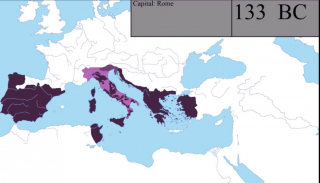
One hundred years later in 125 BC, came the start of Roman expansion north of the Alpes. Rome had already moved easwards and had a foothold on the Anotolian Peninsula.
Provence and coastal Occitanie were still controlled controlled by the the Greek colonies of Massalia and Empurion. Inland Gaul, Occitanie and Aquitaine were independant.
Rome wanted easy access to it’s empire in Spain and made an agreement with the Greek colonies that they could build a Roman road to Catalonia annd in return Romans would protect the Greeks from both Celts and Aquitanii.
It was almost a guarantee that Rome would extend its territories.
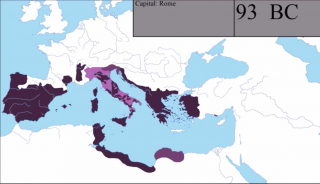
However as late 60 BC the Greek states were still independant. They then made a very bad decision in supporting Pompey in the civil war against Caesar. Pompey lost and so did they.
Initially as part of the Roman System of checks and balances, Governors of provinces had limited tenure, usually two years.
Legions usually responded to one of the two consuls appointed with a yearly tenure., but could be assigned to a govenor in times of emergency.
In 50 BC Julius Caesar was effectively in charge of the expansion programme (war?) and he changed the format for establishing new coloniae.
Traditionally for each new colonia around 300 roman citzens were sent to live in the new locations. They were reqired to elect a goverment of three people from their number. They were also responsible for organising their own defence. They became very Independant.
Caesar changed this system. Each province was given a single military appointment (Dux) with a legion to support him. The commander of the legion was called Comes. The role of the Governor became mainly administrative and he was dependant on each individual colonia for local government.
As before each colonia was administered by Roman citizens, but they were now supplemented by retired army vetarans and the leaders of the native tribe controlling the area.
Any native settlements who co-operated (the Treverii) were accepted as trading partners, often given Roman citizenship and a degree of autonomy including their own senate. Any who obstructed were however severely disciplined (the Helvetii).
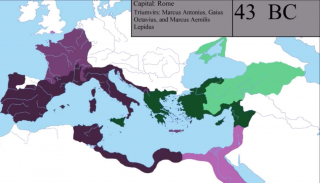 It is interesting to note that the Basque country ( Cantabria and Navarre ) was still outside of Roman control even after the completion of Caesars “Gallic Wars”
It is interesting to note that the Basque country ( Cantabria and Navarre ) was still outside of Roman control even after the completion of Caesars “Gallic Wars”
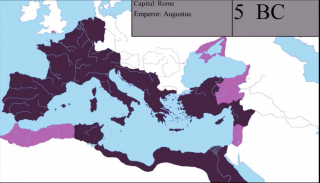
Up to this point tribal land in Gaul and Aquitania had belonged to the tribe but with the arrival of Roman law the land passed into private ownership and could be bought and sold. the first beneficianaries were the local members of the governing council (or) senate.
There was, however, a gradual increase in Roman settlers. Rich and privilaged people bought farms and villa’s. Retired soldiers were given land bought by the Empire.
Because of Caesars changes in general the Roman invasion did little to displace the independent Tribes. The land passed into the hands of those who accepted the responsibility for administrating the provinces, Both Romans and the previous tribes. Gauls, Aqitanii and Iberians were still running the Roman government and administration 500 years later. They accepted the inevitable and took well to life under Roman rule though they always searched for ways to retain a measure of independance.
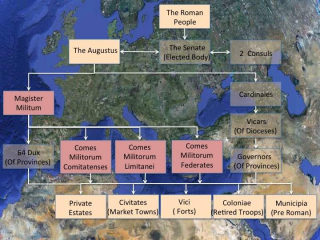
As long as the Roman Empire continued the rulers, at least in theory, served the people. Every change in leadership demanded support from the people, though the empire was so large that different candidates were supported from different regions.
Breakdown
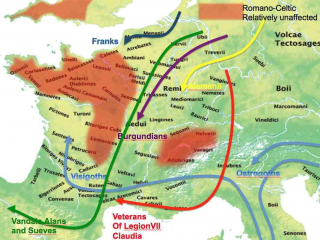 Eventually central Roman control broke down. There were a series of invasions and the movement of whole populations. The legions could no longer be relied upon to provide security or impose local law. Local populations took on their own defence . Initially, not every area was effected by the invasions, but from a knowledge of what was happening elsewhere preparations were made.
Eventually central Roman control broke down. There were a series of invasions and the movement of whole populations. The legions could no longer be relied upon to provide security or impose local law. Local populations took on their own defence . Initially, not every area was effected by the invasions, but from a knowledge of what was happening elsewhere preparations were made.
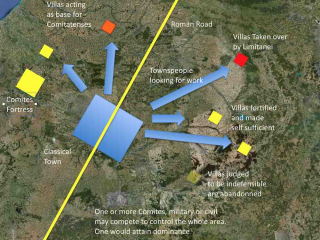
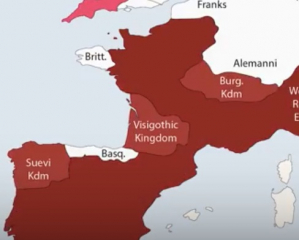
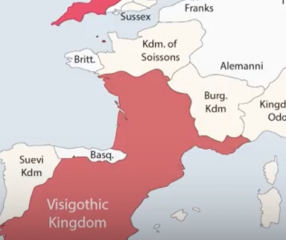 In Brittany; along the band between the Loire and the channel coast and into the high mountains of Auvergne the Roman administration was almost untouched. This area was under the general leadership of Count Syagrius. His state lasted for over twenty years.
In Brittany; along the band between the Loire and the channel coast and into the high mountains of Auvergne the Roman administration was almost untouched. This area was under the general leadership of Count Syagrius. His state lasted for over twenty years.
The local leader who took control was inevitably became known as the Comes , and often was the Comes which progessed to the title Count or Comte). the word “noble” is also a roman word, which was reserved for those on the upper reaches of the cursus honorum This revised system became institutionalised.
The counts could be drawn from the Roman administrators, from prominent locals or from members of the migrating peoples. who opted to stay locally
It made little difference, members of the families of the comtes intermarried creating a ruling class with an extensive gene pool.
The hereditary nature of the position of Comte was again copied from Rome. In the later years of the Empire the Augustus or Emporer had also become hereditory.
It gave a measure of stability in turbulent world. The Comtes became ever more independant, but still adhered to the concet of being Roman and adhering to Roman laws an institutions.
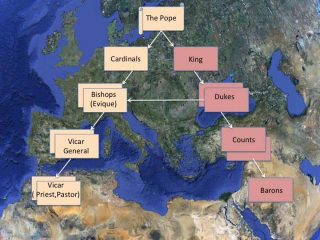 In fact the Roman structure of government survived almost everywhere. but with some major changes , inspired by the church of Rome.
In fact the Roman structure of government survived almost everywhere. but with some major changes , inspired by the church of Rome.
The story of how a teenage rebel called Clovis accused of murder and banished by his tribe, became the champion of the Church of Rome is a story in itself. Actually not a story as no one knew exactly how it happened.
Clovis and his descendants became the masters of Western Europe. His rise to power came with three additional features. Kings are all powerful in material matters but they have to be approved and anointed by the Pope.
The Church of Rome provided administration and justice, or at least the Church’s version of justice.
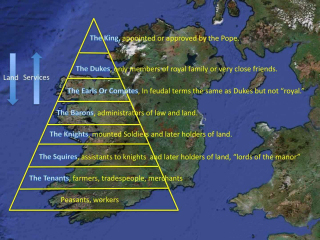 All land holding was controlled by the King. He then carved up his kingdom amongst those he knew best or those already in position who were prepared to swear allegiance to him. In each area further subdivisions were made again on a basis of declared fealty. The feudal system was born. and the pyramid of ownership and responsibility was reversed.
All land holding was controlled by the King. He then carved up his kingdom amongst those he knew best or those already in position who were prepared to swear allegiance to him. In each area further subdivisions were made again on a basis of declared fealty. The feudal system was born. and the pyramid of ownership and responsibility was reversed.
However to the south, in the Visigothic lands the churches plan was not fully implemented perhaps even obstructed. The Gothic overlords were Arians not Trinitarians and this enabled the spread of a very different form of Christianity which it time became known as the Cathar religion. Thus both the rulers and the people had did not accept the teaching of the church and therefore did not submit to the church’s demands.
Even when the Northern Franks gained overall control their hold was tenuous. Local Comptes retained control of the law the Roman legal system still apply. Church courts, where they existed were limited to dealing with clerical matters.
The role of the Comte in providing protection for the local people meant that superficially their roles were indistinguishable from the comets in the north . but they were in fact very different. The Visigothic families took the place of the patricians, the aristocratic Roman Families but they left in place the essential elements of the Roman Administration.
Who were the Goths?
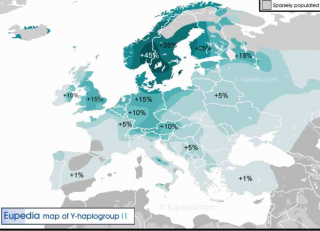 Subject to some dispute (were the Goths one of the "lost" tribes of Israel?)
Subject to some dispute (were the Goths one of the "lost" tribes of Israel?)
The Visigothic lands included Provence, Occtanie, Aquitaine and Spain, The large scale immigration of Goths, and indeed of the Alans and Vandals was not intended to destroy the Empire but rather to share it’s benefits.
The Goths, were a Germanic tribe who had been acting a mercenaries for the Roman Empire. Initially they were working to to preserve order on behalf of the Emporer, ( particularly in Spain) but eventually they declared an independant state , with all the Roman institutions intact.
There was one big difference. The Goths were of the Arian faith, which had been declared a heresy by the Church of Rome. It is said that the Western goths left Italy to go to lands where their fath would be tolerated.
It was the religeous question which lead to 700 years of instability.
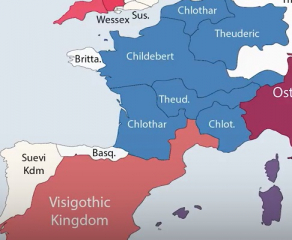
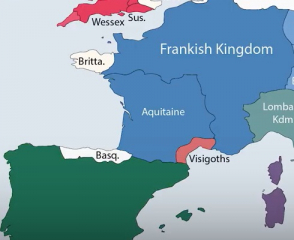
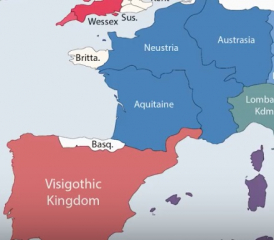
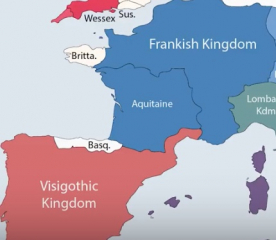
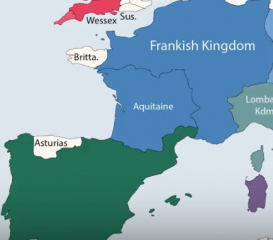
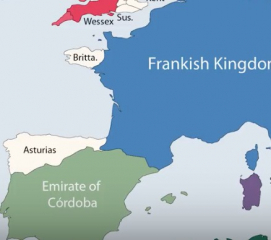
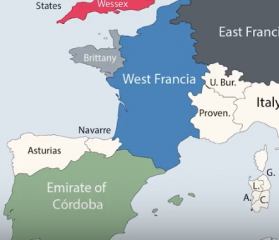
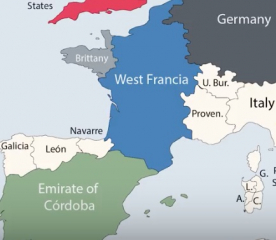
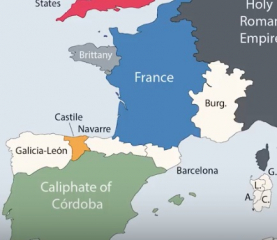
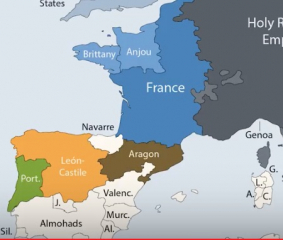
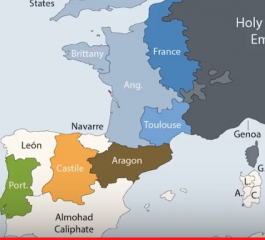
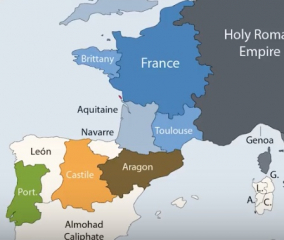
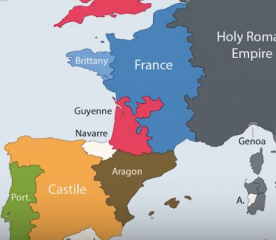
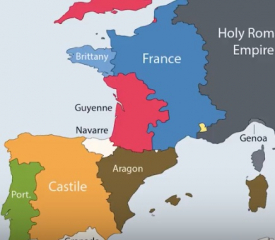
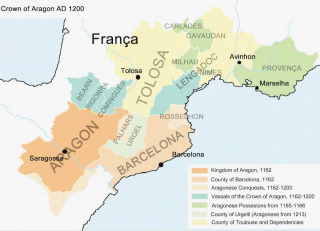
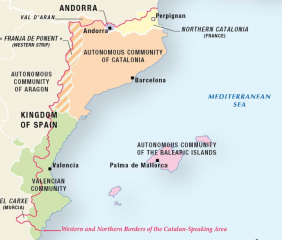
Subsequently there were four invasions of Occitaine and Aquitaine intended to overthrow the heretics and enforce the faith of the Roman Church and one by the Moors whose objective was to spresd the moslem faith..
The evidence from genealogical charts of the families of the Comtes is that these invasions did not remove them. in 1300. Their family trees were dominated by Franks but included many Visigoths as ancestors. Many families could trace their heritage back to Roman Senarors , Comes and Consuls. several families acquired moorish blood but the families survived.
Obviously the comtes did deals with whoever claimed soveriegnty but over the centuries little changed.
